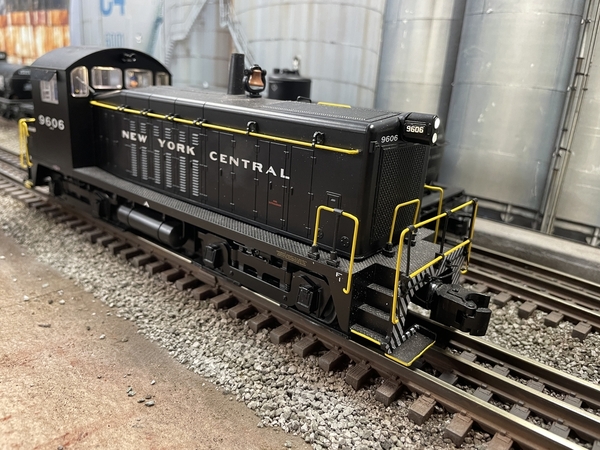Yes, the lack of "oozing" is noticeable and unfortunate. Would re-wiring the motors in series help? The fastest I run my switchers is maybe 10 smph so top speed isn't an issue.
For any given voltage, series wiring will cut your speed in half . If the loco doesn't have speed control from the factory, rewiring the motors in series should calm it down. If it does have speed control, it still might help a little, but there could be unpredictable effects so proceed at your own risk.
On vertically-motored diesels from MTH, Weaver, etc., one truck cannot "push" the other. So when one motor/truck encounters friction and "sticks," the speed control increases power until it breaks loose. The loco surges briefly. Then speed control reduces power, and it sticks again. Rinse, lather, repeat until track speed is high enough to put the motors in the linear portion of their speed-voltage curve. This phenomenon seems more noticeable on locos where the flywheels are small or thin. Circa 2008, Lionel switched to back-drivable gears whereby the motors can actually help each other. So you're less likely to see this behavior on a Legacy GP9, etc.
Locos are longer than they are tall. So by orienting the drivetrain fore-and-aft, the motor can be longer, producing more torque. The flywheels can be thicker, too. 1,000,000 model railroaders in other scales do it this way. Vertical motors are a toy-train thing, originally because of tight curves. Today because the modular dual-motor setup costs less to produce, is easier to service, and it leaves plenty of room for that big stack of circuit boards that we can't live without.
AFAIC, couplers in 3-rail O are a lost cause. Remember, there are no NMRA-like standards; as much fault lies with the heterogeneity of rolling stock as with the locos. I'm with RSJB18, if it doesn't couple on the first try I use my hands. So much for destroying the illusion of realism! The "Hand of God" approach also requires that your yards and sidings be within arms' reach. My $.02.













